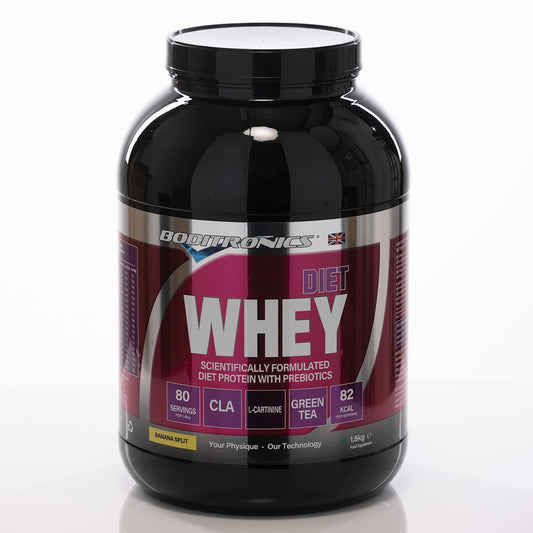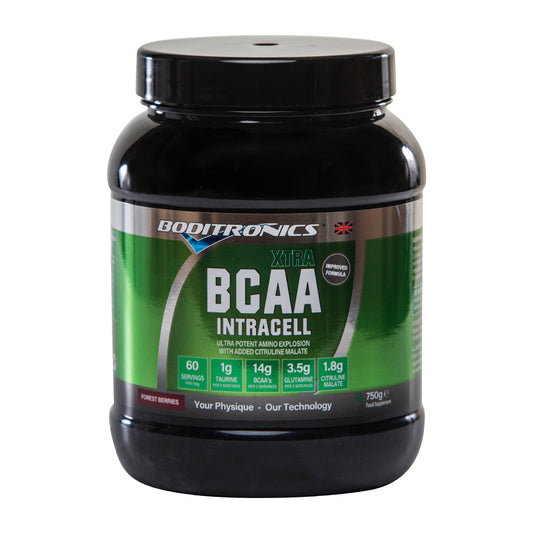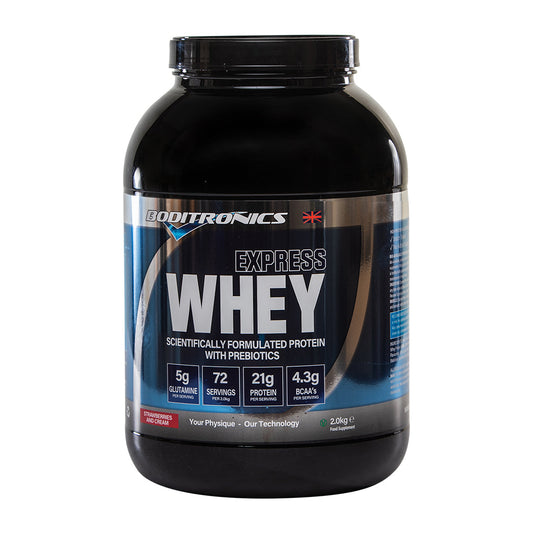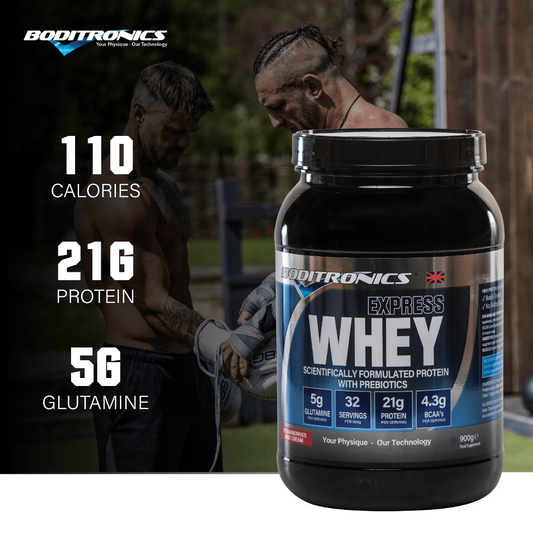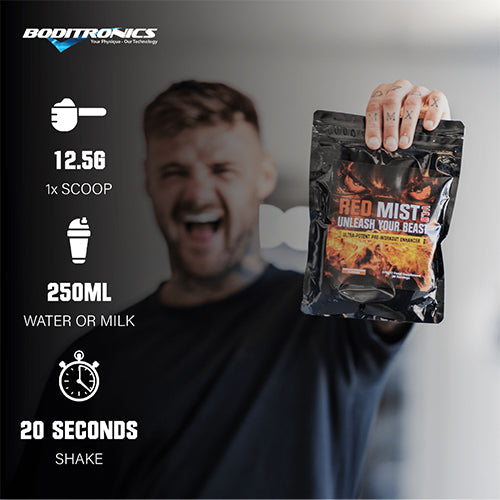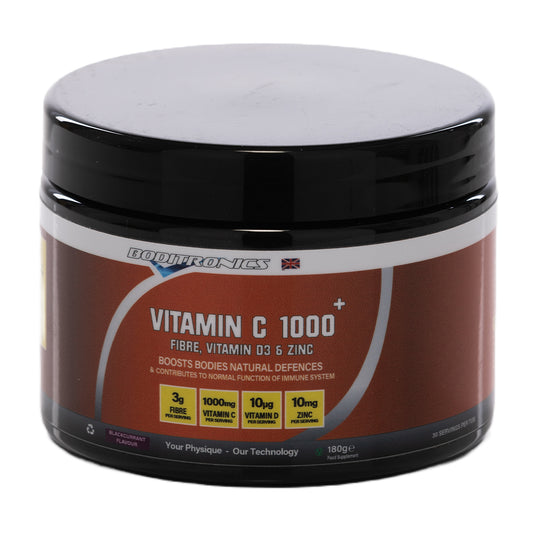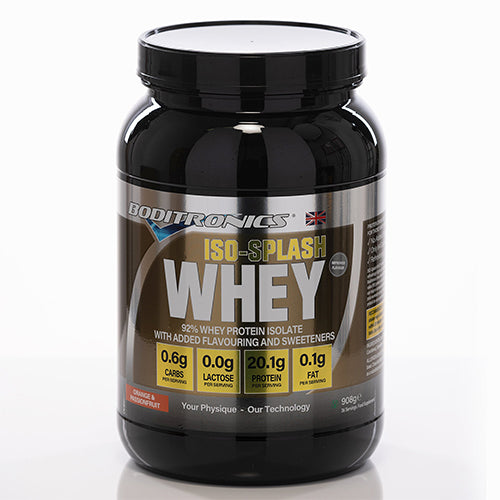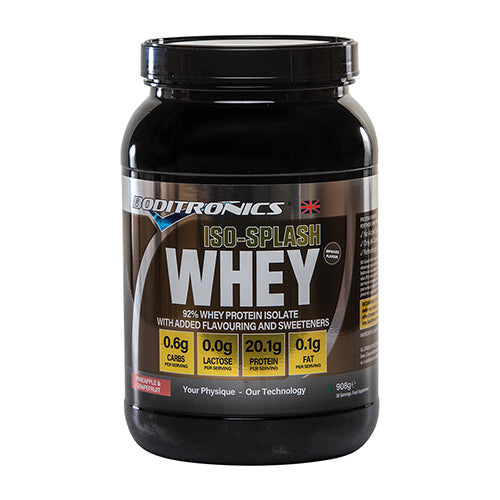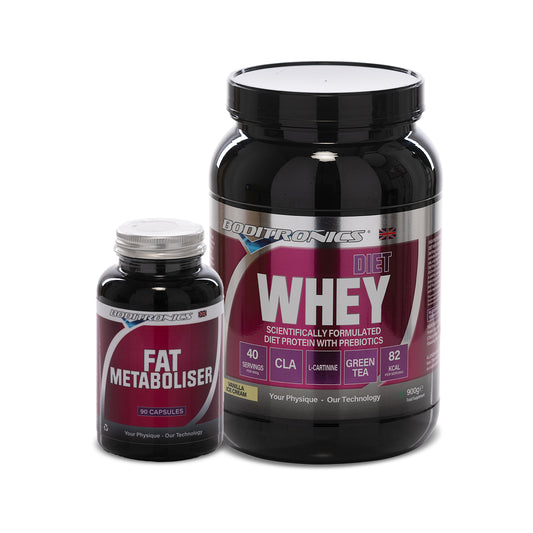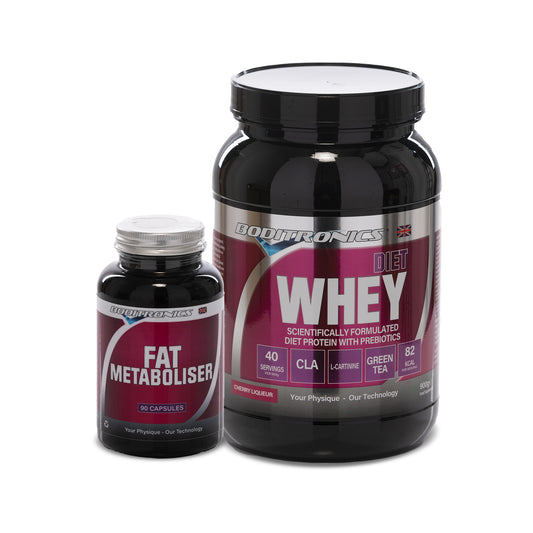BCAA's Explained
What is it All About: AA’s, EAA’s or BCAA’s
Can we be forgiven for not really understanding the confused messages we are getting about Amino Acids – AA’s. All protein consists of – mainly – 21 Amino Acids (AA’s). An Amino Acid is a protein forming building block containing and amino compound attached or bonded to an acid. Hence Amino Acid. Muscle consists of protein, so it is a logical step to say that to grow muscle, you need to eat enough protein. Which is enough of all 20 amino acids.
Protein itself tends to be long chains of amino acids joined together. This requires a lot of digesting throughout the gut to break it down so our bodies can utilise it. Protein is broken down into chains of 1 – 3 peptide bonded amino acids through digestion – or “hydrolysation” - and then it can be absorbed into the bloodstream, through the stomach wall. So, eating a chicken today will be amino acids tomorrow.
But, this is not enough in sports nutrition. We want our amino acids now. So, we consume short chain proteins, like hydrolysed protein or even Whey, which can bypass normal digestion and be tracked into the bloodstream within 45 minutes of being consumed. Alternatively, we can consume free form amino acids – single amino acids – which can also be digested quickly. As they are short, they get absorbed more quickly, right? Well, this is not really the case as they compete with the peptide bonded chains of 2 or 3, the body’s preferred choice of amino acid, which slows down the absorption of the free form amino acids which are believed to be absorbed last.
So, the best way to take amino acids is through food or a good protein supplement. Whey, a whey blend or a complete blend all are ideal. These consist of complete proteins – protein which contain all the amino acids your body needs. (Some do not and are called incomplete proteins.)
So, then we come to Amino Acid Supplements. Branch Chain Amino Acids (BCAA’s) and Essential Amino Acids (EAA’s). Don’t lose me here, but BCAA’s are EAA’s. It is just there are more EAA’s – not all EAA’s are BCAA’s. They mean what they say. Branch Chain Amino Acids are a branch in their chain. Essential Amino Acids are essential to be eaten – your body cannot make them. (Your body can make Non-Essential Amino Acids.)
BCAA’s have been used many years and if you ask your gym buddy, he/she will have taken them to reduce muscle soreness or even help with a hangover. They consist of 3 amino acids – Leucine, Isoleucine and Valine. They work and there is a lot of research showing Leucine, in particular, helps muscle recovery and growth. Whey is a good source of protein, for example, as it is high in Leucine.
It has to be noted that BCAA’s work with a good recovery formula – which includes easily digested proteins some carbs and water. Not instead of a good recovery formula. Some companies started promoting whey protein for recovery, but really this is just wrong. I am not a massive fan of the EU but even they accept protein for recovery is not right. You need good sources of protein to stop muscle breakdown and start recovery/growth, but carbohydrates play a massive factor in this. Whey protein concentrate is virtually carbohydrate free. The objective of recovery is to also push your insulin levels up, to mobilise your own bodies anabolic resources. The carbohydrate also replaces lost glycogen. Do this without exercise, and you will just get fat! So, if you are exercising, do not believe everything published to avoid obesity.
The other essential amino acids, apart from the BCAA’s already referred to (Leucine, Isoleucine and Valine) are Histidine, Lysine, Methionine, Phenylalanine, Threonine and Tryptophan. There are laws against supplementing with Tryptophan. (The Tryptophan in Food (England) Regulations 2005). So, call me a cynic, but most EAA products do not contain this – or it is at a very low level.
Also, the most abundant free form amino acid in the body is glutamine – a non-essential amino acid – but you really would be advised to be supplementing with this.
So, now we see that Essential Amino Energy contains Non-Essential Amino Acids.
So, when you are reading other blogs about BCAA’s vs EAA’s, please be aware of misinformation. This is not really what is on offer in sensible products.
I acknowledge that a lot of historical studies are not comprehensive enough and are lab studies. I just tend to believe the feedback I hear. I also believe that you should treat any free form amino acid as a supplement and additional to a good diet of complete protein.
Supplementing with chosen amino acids – Creatine, L-Glutamine, BCAA’s and a wider range of Amino Acids has its place. But you need to get your diet right, eat enough protein from your daily diet of a good Whey protein or protein blend and then supplement with what is right for you. A good BCAA is a great place to start. If you can get one with added L-glutamine, Citrulline Malate and a B6 energy vitamin, with electrolyte minerals, you have about cracked it. But don’t believe taking 9 amino acids – when you need 21 – is the answer to anything.
Over the years, I have studied the same studies being relied upon by some blogs to dismiss BCAA’s. Some people refer to one study as the “nail in the coffin for BCAA’s”. The study they quote is “Branched-chain amino acids and muscle protein synthesis in humans: myth or reality?” by a single person, Robert R. Wolfe. , who conclude that “We conclude that dietary BCAA supplements alone do not promote muscle anabolism”. But that is not what the study says. It says you need a broad spectrum of amino acids – as we all know – and that BCAA’s will now work without other protein sources being available in the diet. Under Competing Interests, it declares that “Dr. Wolfe owns shares in Essential Blends, LLC,” A search reveal that Essential Blends has gained $841,137 in 3 tranches of funding of the US Government to test an Essential Amino Acid formula in the elderly and obese. See https://www.sbir.gov/sbirsearch/detail/624231. This clear lack of objectivity is the “nail in the coffin” for this study, for me.
I have referred to a number of other articles including those by Cardiff Sports Nutrition, which has since been taken down and one by Primeval Labs - which has also been taken down - to promote EAA Max. These appear to quote convincing studies about EAA’s but I am really not satisfied that some of their references bear detailed scrutiny.
The bottom line is you need Amino Acids (AA’s) in your diet – and protein is a good source. BCAA’s, EAA’s (which include BCAA’s) and other amino acids including Creatine, Beta Alanine and L-Glutamine are all supplements you may need. Do your research and take them with a proper diet designed around your nutritional and exercise needs. Watch out for “research” which has an ulterior motive.
By: Ross McManus
Competing Interests: I own a leading food innovations company – MP Bio Science Ltd, with my family. We have developed numerous leading Amino Acid, BCAA and “Essential Amino Acid” (being essential Amino Acids, not necessarily EAA) products over the years. We have developed leading supplements for leading sports teams, Olympic teams and individual athletes with some great successes. I trained in nutrition (in Agriculture) between 1983 – 1985 and have studied lab testing processes as well as protein sources. I believe in good nutrition as part of any exercise or diet regime and dislike all nonsense – whether it is bad nutritional practice or bad training practices. We just make good food. We are the largest leading independent contract manufacture of sports and diet supplements in the UK and have direct ownership of Boditronics. I have been developing leading sports supplements since 1997. We manufacture, or have manufactured, many of the leading supplement brands you see in the world today. We have always worked with some of the leading scientists and thinkers in nutrition and have always been leading the way in terms of new product development.
References
- Ispoglou, T., King, R. F., Polman, R. C., & Zanker, C. (2011). Daily L-leucine supplementation in novice trainees during a 12-week weight training program. International Journal of Sports Physiology and Performance, 6(1), 38-50.
- Portier, H., Chatard, J. C., Filaire, E., Jaunet-Devienne, M. F., Robert, A., & Guezennec, C. Y. (2008). Effects of branched-chain amino acids supplementation on physiological and psychological performance during an offshore sailing race. European Journal of Applied Physiology, 104(5), 787-794.
- Borgenvik, M., Apró, W., & Blomstrand, E. (2011). Intake of branched-chain amino acids influences the levels of MAFbx mRNA and MuRF-1 total protein in resting and exercising human muscle. American Journal of Physiology-Endocrinology and Metabolism, 302(5), E510-E521.
- Shimomura Y, Yamamoto Y, Bajotto G, et al. Nutraceutical effects of branched-chain amino acids on skeletal muscle. J Nutr. 2006;136(2):529S-532S.
- Shimomura, Y., Inaguma, A., Watanabe, S., Yamamoto, Y., Muramatsu, Y., Bajotto, G., ... & Mawatari, K. (2010). Branched-chain amino acid supplementation before squat exercise and delayed-onset muscle soreness. International Journal of Sport Nutrition and Exercise Metabolism, 20(3), 236-244.
- Mourier A, Bigard AX, de Kerviler E, Roger B, Legrand H, Guezennec CY. Combined effects of caloric restriction and branched-chain amino acid supplementation on body composition and exercise performance in elite wrestlers. Int J Sports Med. 1997;18(1):47-55. doi:10.1055/s-2007-972594.
- Kimball SR, Jefferson LS. Signaling pathways and molecular mechanisms through which branched-chain amino acids mediate translational control of protein synthesis. J Nutr. 2006;136(1 Suppl):227S-31S.
- Yoon M-S. The Emerging Role of Branched-Chain Amino Acids in Insulin Resistance and Metabolism. Nutrients. 2016;8(7):405. doi:10.3390/nu8070405. https://www.ncbi.nlm.nih.gov/pmc/articles/PMC4963881
- Aguiar AF, Grala AP, da Silva RA, et al. Free leucine supplementation during an 8-week resistance training program does not increase muscle mass and strength in untrained young adult subjects. Amino Acids. 2017;49(7):1255-1262. doi:10.1007/s00726-017-2427-0. https://www.ncbi.nlm.nih.gov/pubmed/28444456
- Moberg M, Apro W, Ekblom B, van Hall G, Holmberg H-C, Blomstrand E. Activation of mTORC1 by leucine is potentiated by branched-chain amino acids and even more so by essential amino acids following resistance exercise. Am J Physiol Cell Physiol. 2016;310(11):C874-84. doi:10.1152/ajpcell.00374.2015. https://www.ncbi.nlm.nih.gov/pubmed/27053525
- Jackman SR, Witard OC, Philp A, Wallis GA, Baar K, Tipton KD. Branched-Chain Amino Acid Ingestion Stimulates Muscle Myofibrillar Protein Synthesis following Resistance Exercise in Humans. Frontiers in Physiology. 2017;8:390. doi:10.3389/fphys.2017.00390. https://www.frontiersin.org/articles/10.3389/fphys.2017.00390/full
- Wolfe RR. Branched-chain amino acids and muscle protein synthesis in humans: myth or reality? J Int Soc Sports Nutr. 2017;14(1):30. doi:10.1186/s12970-017-0184-9.


